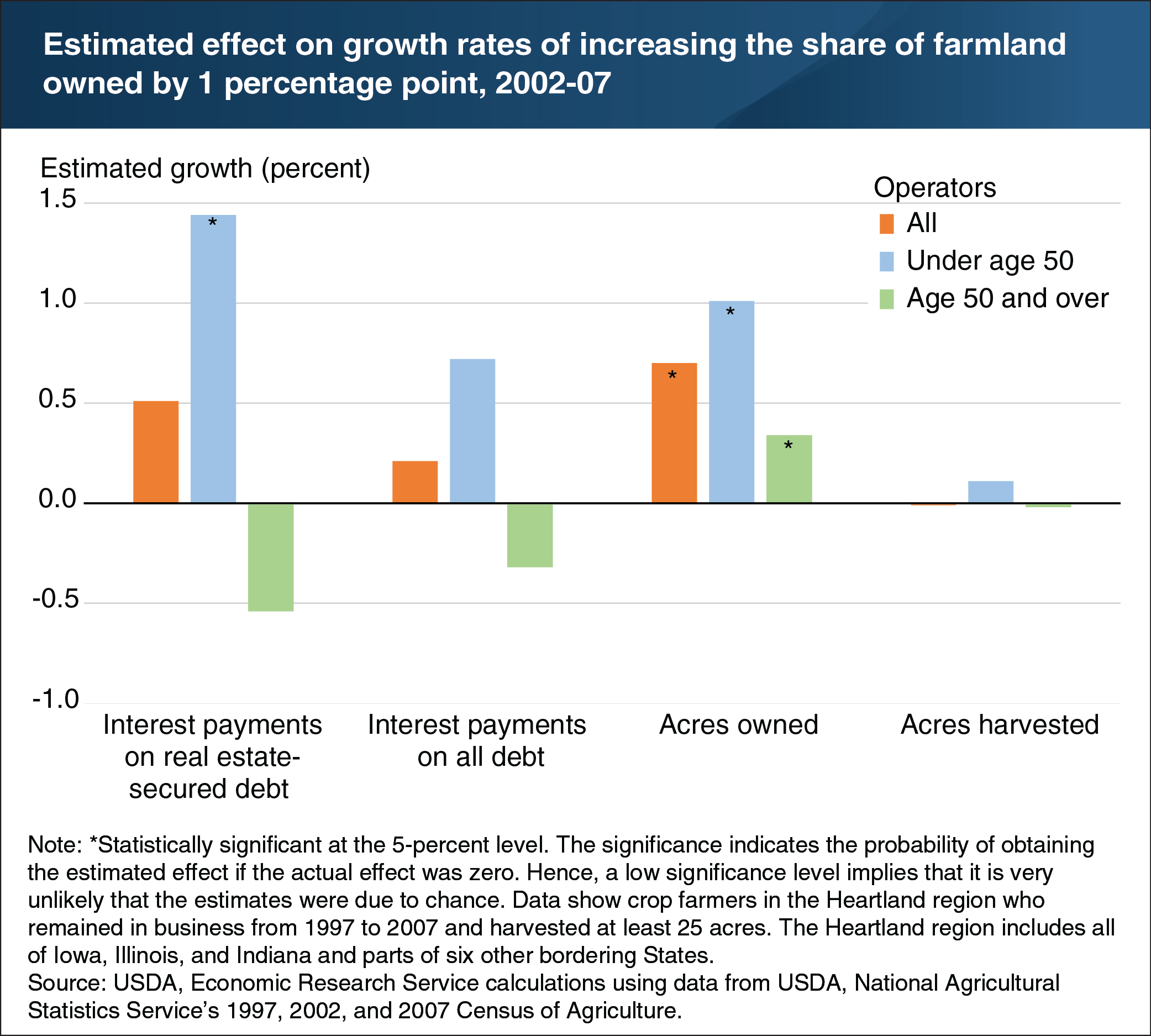Young farmers who owned more of their land also borrowed more and bought more land
- by Nigel Key
- 8/15/2018

For many farmers, farm real estate represents a substantial share of total household wealth and is the most important source of equity used to secure loans. Recent ERS research tested the extent to which owning a larger share of their land allowed farmers in different age groups to borrow more, buy more land, or expand operations. Younger farmers (under age 50 in 1997) may need more credit (because they are in a growth phase of the business) and may be more constrained by their wealth (because they have less of it). For younger farmers, owning an additional 1 percent of one’s land increased the growth rate of interest expenses on real estate-secured debt by 1.44 percentage points between 1997 and 2007. Younger farmers with larger land wealth gains also bought more land: owning an additional 1 percent of one’s land increased the growth rate in land owned by 1.01 percentage points. For the average farm in the sample, that would increase interest expenses by $281, debt by $3,465, and land owned by 4.9 acres. There was no significant effect for older farmers. This chart appears in the February 2018 Amber Waves feature, “Changing Farmland Values Affect Renters and Landowners Differently.”

